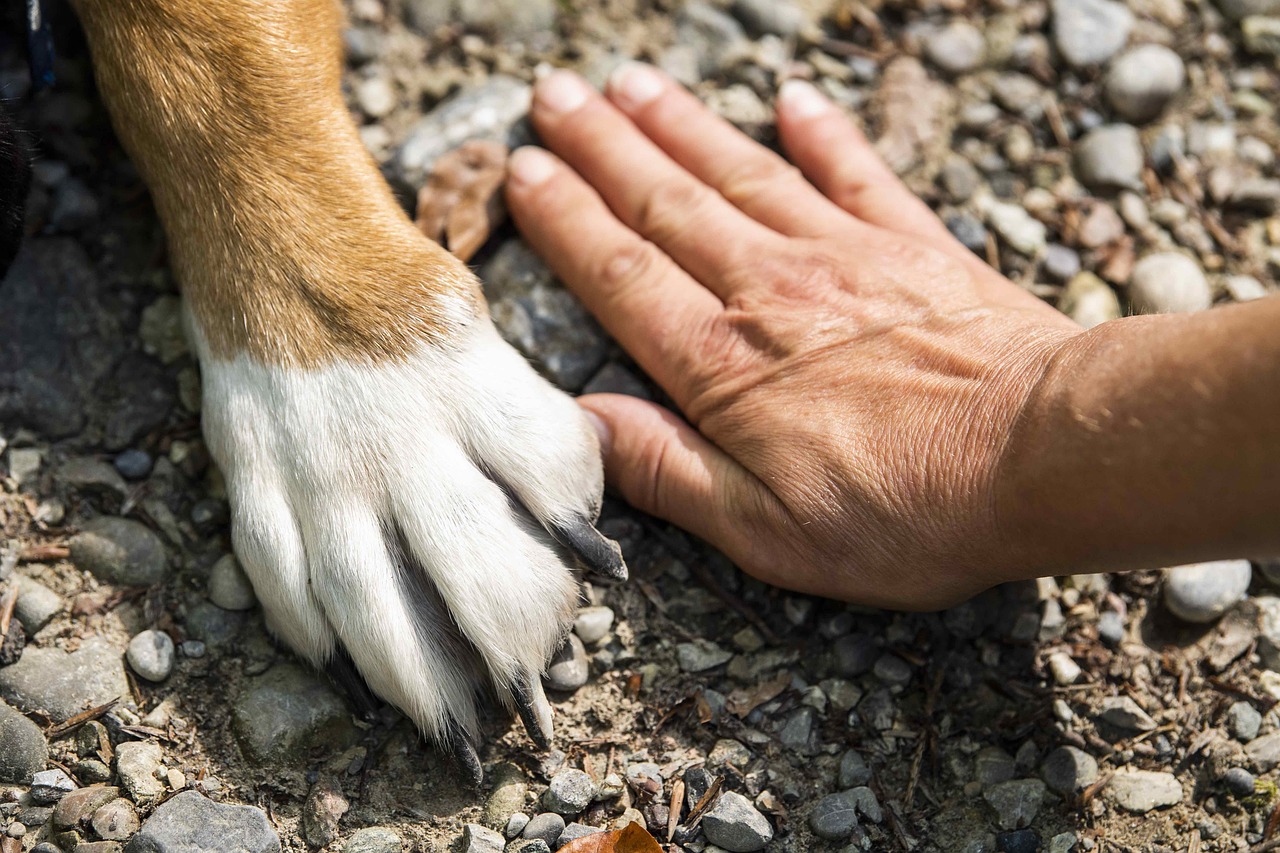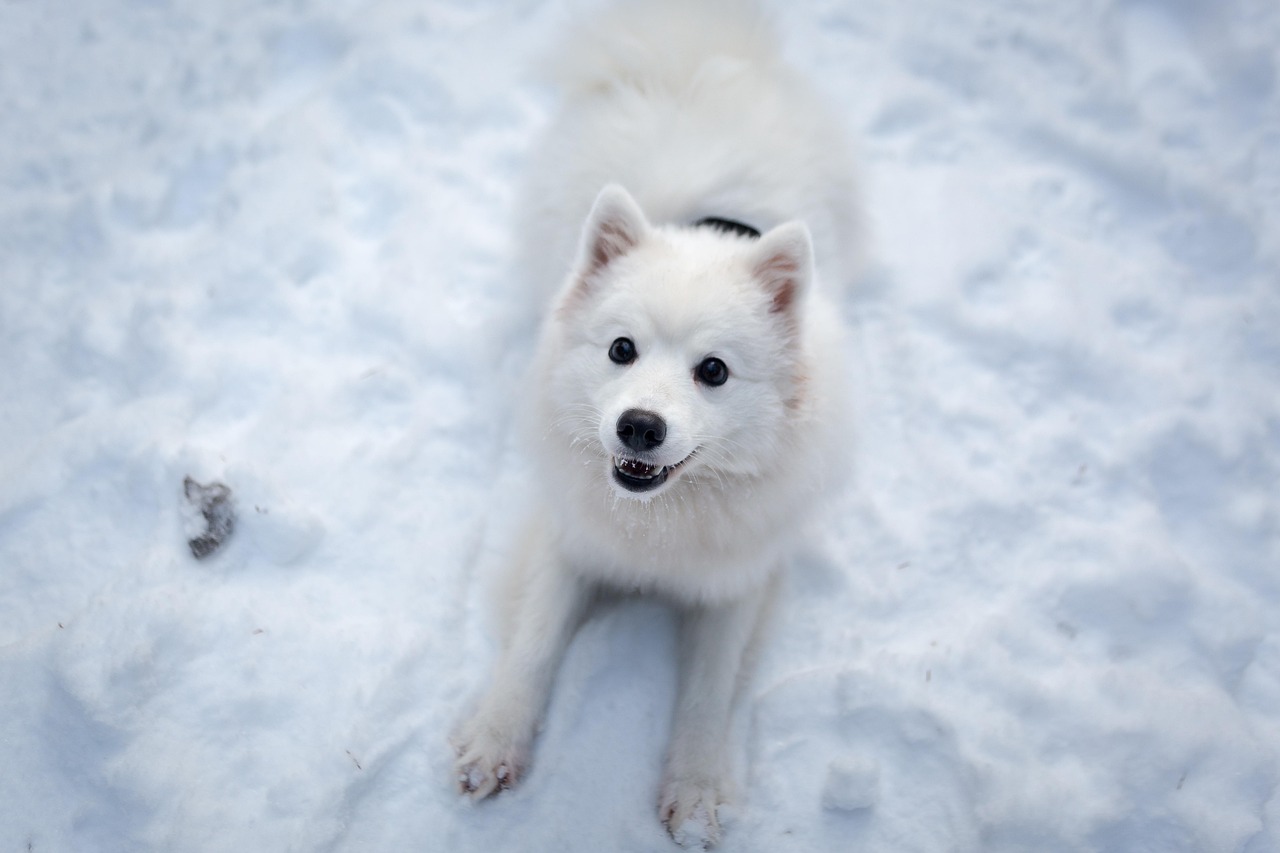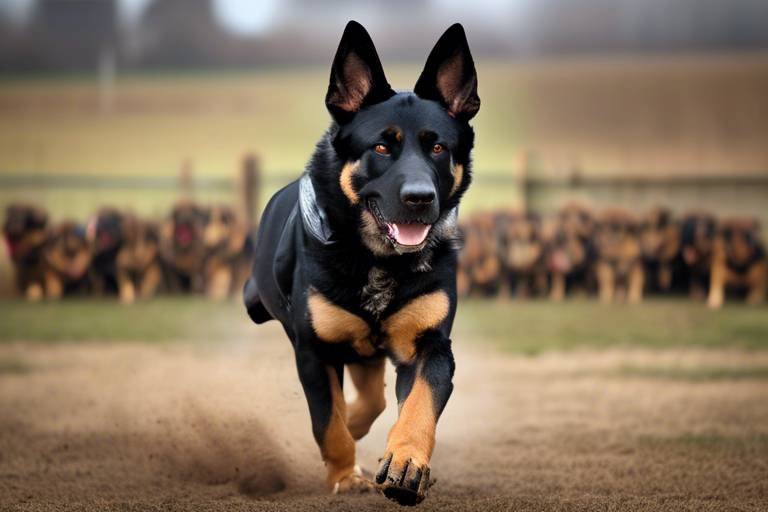The Characteristics of Working Dog Breeds - More Than Just Pets
When you think of dogs, you might picture a cuddly companion, but there’s a whole world of working dog breeds that go beyond mere companionship. These remarkable animals are bred for specific tasks and roles, showcasing traits that make them invaluable to society. From police and rescue work to assisting individuals with disabilities, working dogs are equipped with unique characteristics that set them apart. They are not just pets; they are partners, helpers, and heroes in our communities.
One of the most striking aspects of working dog breeds is their physical attributes. These dogs are often built for strength, agility, and endurance, allowing them to perform demanding tasks effectively. For instance, breeds like the German Shepherd and Belgian Malinois are renowned for their powerful physiques, which enable them to chase down suspects or navigate challenging terrains during search and rescue operations. Their bodies are designed for performance, making them ideal candidates for jobs that require both speed and stamina.
But it’s not just about muscles; the temperament of these dogs plays a crucial role in their effectiveness. Working dogs are typically intelligent, loyal, and eager to please. This combination of traits makes them highly trainable and capable of learning complex commands quickly. Imagine a dog that not only understands what you want but is also enthusiastic about doing it. That’s the magic of working dog breeds! Their drive to work and bond with their handlers creates a partnership that is both rewarding and essential for success in their roles.
Another defining feature of working dog breeds is their energy levels. These dogs are not couch potatoes; they thrive on physical activity and mental challenges. Regular exercise is not just a suggestion; it's a necessity. Without proper outlets for their energy, working dogs can become bored, leading to destructive behavior. Engaging them in activities such as agility training, obedience drills, or even simple playtime can keep them happy and fulfilled. It’s like giving them a job to do—something they naturally crave!
Equally important is the need for mental stimulation. Working dogs require more than just physical exercise; they need to engage their minds as well. This can include puzzle toys, interactive games, or advanced training exercises. Think of it as a workout for their brains—just as humans benefit from mental challenges, so do our canine companions. This dual focus on physical and mental well-being is essential for their overall happiness and health.
Adaptability is another hallmark of working dog breeds. Many of these dogs can thrive in various environments, whether it’s a bustling city or a quiet rural area. Their ability to adjust to different settings is largely influenced by their training and socialization. For example, a service dog must be comfortable navigating crowded spaces, while a search and rescue dog may need to work in rugged outdoor conditions. Their versatility makes them suited for a wide range of roles, demonstrating their incredible capacity to adapt and excel.
In conclusion, working dog breeds are much more than just pets; they are dedicated companions that play vital roles in our society. With their unique physical attributes, exceptional temperaments, high energy levels, and adaptability, these dogs are equipped to handle various tasks that benefit us all. Whether they are assisting in emergencies or providing support to those in need, working dogs are truly remarkable creatures deserving of our admiration and respect.
- What are some common working dog breeds?
Some popular working dog breeds include the German Shepherd, Labrador Retriever, Rottweiler, and Border Collie. - How much exercise do working dogs need?
Working dogs typically require at least 1-2 hours of exercise daily, including both physical activities and mental stimulation. - Can working dogs be family pets?
Yes, many working dogs can thrive as family pets if they receive adequate exercise, training, and socialization. - What kind of training do working dogs require?
Working dogs often need obedience training as well as specialized training for their specific roles, such as search and rescue or service work.

When it comes to working dog breeds, their physical attributes are often a reflection of their purpose. These dogs are not just adorable companions; they are designed with specific traits that make them exceptionally capable in various roles. For instance, many working breeds possess a robust and muscular build, which provides them with the strength necessary to perform demanding tasks. Think of them as the athletes of the canine world—built for endurance and agility.
One of the most notable characteristics of working dogs is their agility. Breeds like the Belgian Malinois and German Shepherd are renowned for their swift movements and ability to navigate complex environments. This agility is not merely for show; it plays a critical role in their effectiveness during tasks such as search and rescue operations or police work. Their keen sense of balance and coordination allows them to maneuver through challenging terrains, whether that be dense forests or urban landscapes.
Another essential physical trait is their endurance. Working dogs often have high stamina levels, enabling them to work for extended periods without tiring. This endurance is crucial for jobs that require long hours of activity, such as herding livestock or participating in rescue missions. For example, breeds like the Siberian Husky are known for their ability to run long distances in harsh conditions, which is why they are often used in sledding and search operations in snowy terrains.
Additionally, many working breeds have a coat that is not only beautiful but also functional. The double coat of a Rottweiler or a Bernese Mountain Dog provides insulation and protection against the elements, making them well-suited for outdoor work. This protective layer keeps them warm in winter and cool in summer, allowing them to perform their duties effectively in various weather conditions.
Furthermore, the size of working dog breeds can vary significantly, from the compact and agile Corgi to the towering and powerful Great Dane. Each breed's size contributes to its specific role, with larger breeds often being used for protection or heavy labor, while smaller breeds may excel in tasks that require agility and quickness. This diversity in size and build is one of the many reasons why working dogs are so versatile.
In summary, the physical attributes of working dog breeds are not just coincidental; they are intricately linked to their roles and responsibilities. Their strength, agility, endurance, and protective coats make them uniquely equipped to handle the challenges they face in various environments. Understanding these traits helps us appreciate the incredible capabilities of these dogs, reminding us that they are indeed more than just pets—they are essential partners in our communities.

The temperament of working dog breeds is a vital aspect that significantly influences their effectiveness in various roles. These dogs are not just furry companions; they are bred for specific tasks that require a unique combination of traits. Imagine a dog that embodies the perfect blend of intelligence, loyalty, and a strong desire to please. This is what makes working dogs stand out in the canine world. Their innate characteristics enable them to excel in demanding environments, whether it’s assisting in search and rescue missions or providing support for individuals with disabilities.
One of the key features of working dog breeds is their intelligence. These dogs are quick learners, capable of understanding complex commands and tasks. This intelligence is not just for show; it’s a necessity for their roles. For instance, a police dog must quickly learn to differentiate between various scents to assist in investigations. Their ability to process information rapidly is what sets them apart and allows them to perform their duties efficiently.
Alongside intelligence, loyalty plays a crucial role in the working dog’s temperament. These breeds form strong bonds with their handlers, often displaying an unwavering commitment to their training and tasks. This loyalty is not just emotional; it translates into a reliable working relationship. When a working dog knows they can trust their handler, they are more likely to perform at their best, whether that means searching for a lost person or guiding someone with visual impairments.
Additionally, working dogs have a strong drive to please. This drive is what motivates them to work hard and fulfill their roles. It’s like having a teammate who is always eager to give their best effort. This characteristic makes training not only effective but also enjoyable for both the dog and the handler. When a dog is motivated to please, they are more likely to engage in training sessions and learn new commands quickly.
However, it’s important to note that these traits come with a need for proper management. High energy levels are common among working dog breeds, which can lead to challenges if not addressed. Without adequate physical and mental stimulation, these dogs can become bored, leading to destructive behaviors. Therefore, understanding their temperament is essential in ensuring they are happy and well-adjusted. This can include:
- Regular exercise routines
- Engaging training sessions
- Interactive playtime
In summary, the temperament of working dog breeds is characterized by intelligence, loyalty, and a strong desire to please. These traits not only enhance their ability to perform various tasks but also make them exceptional companions. As we delve deeper into the unique characteristics of these breeds, it becomes clear that their temperament is a crucial factor in their success and effectiveness in society.
Q1: What are the most common working dog breeds?
A1: Some of the most common working dog breeds include the German Shepherd, Labrador Retriever, Rottweiler, and Belgian Malinois. Each of these breeds has unique traits that make them suitable for various tasks.
Q2: How much exercise do working dogs need?
A2: Working dogs typically require at least 1-2 hours of exercise daily, depending on their breed and energy levels. Regular physical activity is essential to keep them healthy and prevent boredom.
Q3: Can working dogs be kept as family pets?
A3: Yes, many working dogs make excellent family pets, provided they receive sufficient training, exercise, and mental stimulation. Their loyalty and protective instincts can be beneficial in a family setting.
Q4: What kind of training do working dogs require?
A4: Working dogs typically undergo obedience training as a foundation, followed by specialized training based on their intended roles, such as search and rescue or service work.
When we talk about working dog breeds, one of the most striking characteristics that comes to mind is their incredible energy levels. These dogs are not just your average pets lounging around the house; they are built for action! Imagine a sports car revving its engine, ready to hit the racetrack—that's how these dogs feel when they're not engaged in a task. Their high energy is essential for performing various roles, from herding livestock to assisting in search and rescue operations.
To keep these dogs happy and healthy, it’s crucial to understand their exercise needs. A working dog typically requires at least 1 to 2 hours of vigorous exercise daily. This isn’t just a casual stroll around the block; we're talking about activities that challenge their physical and mental capabilities. Whether it's running, playing fetch, or engaging in agility training, these activities help burn off excess energy and prevent boredom. Without sufficient exercise, a working dog can become restless and may even resort to destructive behaviors, such as chewing furniture or digging up the yard.
Moreover, mental stimulation is just as important as physical exercise. Think of it this way: a dog’s mind is like a muscle that needs regular workouts. Activities that challenge their intellect, like puzzle toys or obedience training, can keep them sharp and focused. Engaging in tasks that require problem-solving skills can be incredibly rewarding for these breeds. To better illustrate this, consider the following examples of suitable activities:
- Agility Training: This involves navigating obstacle courses, which not only provides physical exercise but also sharpens their focus and coordination.
- Fetch and Retrieve Games: These games can be played in various settings and allow dogs to use their natural retrieving instincts while getting a good workout.
- Interactive Toys: Toys that dispense treats when solved can keep a working dog's mind engaged while rewarding them for their efforts.
In essence, the energy levels of working dog breeds are a double-edged sword. On one hand, they possess the vigor and stamina needed to excel in their roles, making them invaluable assets in various fields. On the other hand, if not properly channeled, this energy can lead to behavioral issues. Thus, it’s essential for owners to provide a balanced routine that includes both physical exercise and mental challenges. By doing so, you can ensure that your working dog not only thrives but also maintains a happy and fulfilling life.
Q: How much exercise does a working dog need?
A: Working dogs typically require 1 to 2 hours of vigorous exercise each day, which can include activities like running, agility training, and fetch games.
Q: What happens if a working dog doesn't get enough exercise?
A: Insufficient exercise can lead to boredom and behavioral issues, such as chewing or digging, as the dog seeks an outlet for its pent-up energy.
Q: Can mental stimulation replace physical exercise?
A: While mental stimulation is crucial, it should complement physical exercise rather than replace it. Both are essential for a working dog's well-being.
This article explores the unique traits of working dog breeds, highlighting their roles, training needs, and contributions to society beyond companionship.
Working dog breeds often possess specific physical traits that enhance their performance in various tasks, such as strength, agility, and endurance, making them well-suited for demanding roles.
The temperament of working dogs is crucial for their effectiveness. These breeds typically exhibit intelligence, loyalty, and a strong drive to please, which aids in training and task completion.
High energy levels are a common characteristic among working dog breeds, requiring regular exercise and mental stimulation to keep them happy and healthy.
Understanding the exercise needs of working dogs is essential, as they thrive on physical activity and can become bored or destructive without it. These dogs are not your typical lap companions; they require a structured routine that includes a mix of vigorous exercise and playtime. For instance, daily activities such as running, hiking, or engaging in agility training can help channel their energy positively.
Moreover, the intensity and duration of exercise will vary depending on the breed. For example, a Border Collie may need at least 2 hours of exercise each day, while a Bulldog might be content with a brisk walk followed by some playtime. It’s essential to tailor the exercise regimen to the specific breed's needs. Here's a quick comparison:
| Breed | Daily Exercise Requirement | Recommended Activities |
|---|---|---|
| Border Collie | 2 hours | Running, agility training, fetch |
| German Shepherd | 1.5 hours | Obedience training, hiking, swimming |
| Bulldog | 30 minutes | Short walks, light play |
In addition to physical exercise, working dogs also need mental stimulation to keep their minds sharp. Activities such as puzzle toys, scent games, and training sessions can provide the cognitive challenges they crave. Think of it this way: just like a child who needs both playtime and homework, working dogs thrive when their bodies and minds are engaged. This holistic approach to exercise will not only keep them physically fit but also enhance their overall well-being.
Many working dog breeds are highly adaptable, able to thrive in various environments, whether in urban settings or rural areas, depending on their training and socialization.
Effective training is vital for working dog breeds, as they often need to learn specific skills and commands to perform their duties efficiently and safely.
Obedience training lays the foundation for a working dog's behavior, ensuring they respond reliably to commands and can work harmoniously with their handlers.
Specialized training may be necessary for certain working dog roles, such as search and rescue, therapy, or service work, requiring unique skills and knowledge.
Working dog breeds serve diverse roles in society, from police and military work to assistance for individuals with disabilities, showcasing their versatility and importance.
Search and rescue dogs play a crucial role in locating missing persons during emergencies, utilizing their keen sense of smell and tracking abilities to aid in recovery efforts.
Service dogs provide invaluable assistance to individuals with disabilities, enhancing their quality of life by performing tasks that their handlers may find challenging.
Understanding the health needs of working dog breeds is essential for maintaining their well-being, as some breeds are predisposed to specific health issues that require attention.
Many working dog breeds face common health issues, such as hip dysplasia or heart problems, necessitating regular veterinary check-ups and preventive care.
Proper nutrition is vital for working dogs to maintain their energy levels and overall health, with diets tailored to their specific activity levels and breed requirements.
- What is the best way to exercise a working dog? A combination of physical activities like running and mental challenges like puzzle games is ideal.
- How much training do working dogs need? Consistent training is crucial; it varies by breed but generally includes obedience and specialized training.
- Can working dogs be kept in apartments? Yes, but they require ample exercise and mental stimulation to thrive in smaller spaces.
This article explores the unique traits of working dog breeds, highlighting their roles, training needs, and contributions to society beyond companionship.
Working dog breeds often possess specific physical traits that enhance their performance in various tasks, such as strength, agility, and endurance, making them well-suited for demanding roles.
The temperament of working dogs is crucial for their effectiveness. These breeds typically exhibit intelligence, loyalty, and a strong drive to please, which aids in training and task completion.
High energy levels are a common characteristic among working dog breeds, requiring regular exercise and mental stimulation to keep them happy and healthy.
Understanding the exercise needs of working dogs is essential, as they thrive on physical activity and can become bored or destructive without it.
Mental stimulation is just as important as physical exercise for working dogs. These breeds are not only built for strength and agility but also possess remarkable intelligence that needs to be nurtured. Imagine a highly intelligent dog trapped in a monotonous routine; it could lead to frustration and behavioral issues. To prevent this, owners should engage their dogs in activities that challenge their minds.
Activities that promote mental stimulation can include:
- Training Exercises: Regular training sessions not only reinforce obedience but also introduce new commands and tricks. This keeps the dog mentally engaged and strengthens the bond between the dog and its handler.
- Puzzle Toys: These toys are designed to stimulate a dog's problem-solving abilities. They often require the dog to figure out how to access treats, providing both a challenge and a reward.
- Interactive Games: Games like hide and seek or fetch with a twist can provide both physical exercise and mental challenges. For instance, hiding treats around the house encourages the dog to use its nose and brain to find them.
Incorporating these activities into a working dog’s routine not only keeps them entertained but also helps to prevent boredom-related issues, such as chewing or excessive barking. Just like us, dogs thrive on variety and challenges, and their happiness often reflects their mental engagement.
Many working dog breeds are highly adaptable, able to thrive in various environments, whether in urban settings or rural areas, depending on their training and socialization.
Effective training is vital for working dog breeds, as they often need to learn specific skills and commands to perform their duties efficiently and safely.
Obedience training lays the foundation for a working dog's behavior, ensuring they respond reliably to commands and can work harmoniously with their handlers.
Specialized training may be necessary for certain working dog roles, such as search and rescue, therapy, or service work, requiring unique skills and knowledge.
Working dog breeds serve diverse roles in society, from police and military work to assistance for individuals with disabilities, showcasing their versatility and importance.
Search and rescue dogs play a crucial role in locating missing persons during emergencies, utilizing their keen sense of smell and tracking abilities to aid in recovery efforts.
Service dogs provide invaluable assistance to individuals with disabilities, enhancing their quality of life by performing tasks that their handlers may find challenging.
Understanding the health needs of working dog breeds is essential for maintaining their well-being, as some breeds are predisposed to specific health issues that require attention.
Many working dog breeds face common health issues, such as hip dysplasia or heart problems, necessitating regular veterinary check-ups and preventive care.
Proper nutrition is vital for working dogs to maintain their energy levels and overall health, with diets tailored to their specific activity levels and breed requirements.
Q: What are the best activities for mental stimulation for working dogs?
A: Activities such as training exercises, puzzle toys, and interactive games are excellent for keeping working dogs mentally stimulated.
Q: How much exercise do working dogs need?
A: Working dogs typically require at least 1-2 hours of exercise daily, including both physical activity and mental challenges.
Q: Can working dogs adapt to living in a city?
A: Yes, many working dog breeds can adapt to urban environments as long as they receive enough exercise and mental stimulation.
When we think of working dog breeds, the first images that often come to mind are those of powerful, muscular animals performing incredible tasks. However, one of the most remarkable traits these dogs possess is their adaptability. Whether it's navigating the bustling streets of a city or working on a serene farm, these dogs have an innate ability to adjust to their surroundings and thrive in a variety of environments. This adaptability is not just a coincidence; it's a product of their breeding and training.
For instance, breeds like the German Shepherd and Border Collie are known for their versatility. They can switch from being a loyal companion at home to a focused worker in high-pressure situations. This ability to adapt is crucial, especially when they are tasked with roles that require them to work alongside humans in diverse settings. Imagine a service dog that helps a person with mobility challenges in a crowded mall one day and assists a search and rescue team in a rugged terrain the next. This is the kind of flexibility that working dogs exhibit.
Moreover, their adaptability is enhanced through proper training and socialization. Working dogs that are exposed to various environments, sounds, and situations from an early age tend to be more confident and less anxious. This exposure helps them develop a robust temperament that allows them to remain calm and focused, regardless of the circumstances. For example, a dog trained for police work must be able to handle the chaos of a busy street while remaining attentive to their handler's commands.
In addition to their physical adaptability, working dogs are also mentally agile. They thrive on challenges and can quickly learn to adjust their behavior based on the tasks at hand. This mental flexibility is essential when they are faced with unexpected situations, such as a sudden change in weather or an unfamiliar environment. Their ability to think on their paws is what sets them apart from other breeds.
To further illustrate the adaptability of working dog breeds, consider the following table that highlights some popular breeds and their adaptability traits:
| Breed | Adaptability Traits |
|---|---|
| German Shepherd | Highly trainable, excels in various roles from police work to service tasks. |
| Border Collie | Extremely intelligent, thrives in both urban and rural environments, excellent herding abilities. |
| Labrador Retriever | Friendly and versatile, suitable for therapy, service, and search and rescue roles. |
| Rottweiler | Strong and loyal, adaptable to family life while also being effective guard dogs. |
In conclusion, the adaptability of working dog breeds is a testament to their remarkable nature. They are not just pets; they are partners who can seamlessly integrate into various roles and environments. This unique trait not only enhances their effectiveness in their duties but also enriches the lives of those they serve. So, whether you're considering bringing a working dog into your life or just admire them from afar, remember that their adaptability is one of the many characteristics that make them truly special.
- What makes working dogs different from other breeds?
Working dogs are bred specifically for tasks such as herding, guarding, and assisting people with disabilities. Their training and instincts set them apart. - Can working dogs live in apartments?
Yes, many working dog breeds can adapt to apartment living, provided they receive adequate exercise and mental stimulation. - How much training do working dogs need?
Working dogs require consistent training throughout their lives to maintain their skills and adapt to new tasks.

When it comes to working dog breeds, effective training is not just a luxury; it's a necessity. These dogs are often tasked with important roles that require them to respond to commands and perform specific actions reliably. Imagine a police dog that doesn't follow commands or a service dog that fails to assist its handler. It's not just a matter of inconvenience; it can be a matter of safety. Therefore, understanding the training requirements for these breeds is crucial for their success and the safety of those around them.
Obedience training is the cornerstone of a working dog's education. This foundational training ensures that the dog understands basic commands such as sit, stay, come, and heel. These commands not only help in everyday situations but are essential for more complex tasks that the dog will need to perform later on. A well-trained dog is a joy to be around, and it builds a strong bond between the dog and its handler. It's important to remember that training should be consistent and positive, utilizing rewards and praise to encourage good behavior.
However, obedience training alone is not sufficient for many working dog roles. This is where specialized training comes into play. Depending on the dog's future responsibilities, specialized training may include search and rescue techniques, therapy dog protocols, or service dog tasks. For example, a search and rescue dog must learn to navigate various terrains and locate missing persons, which requires a unique set of skills. This training often involves simulations and real-life scenarios to prepare the dog for actual emergencies.
Moreover, the training process should be tailored to the individual dog's temperament and learning style. Some dogs may excel in certain areas while struggling in others. It's essential to assess their progress regularly and adapt the training methods accordingly. This personalized approach not only enhances the dog's performance but also keeps them engaged and motivated.
In addition to physical training, mental stimulation is also a key component of a working dog's education. Working dogs thrive on challenges, and incorporating puzzle toys, scent games, and interactive activities can significantly enhance their learning experience. These activities not only keep their minds sharp but also help to prevent boredom, which can lead to destructive behaviors.
Finally, training is not a one-time event but an ongoing process. Regular refreshers and advanced training sessions are vital to maintain the dog's skills and ensure they are always ready for their tasks. Just like athletes, working dogs need to stay in shape both physically and mentally. Consistency and patience are the keys to success in training working dog breeds.
- What is the best age to start training a working dog? Generally, it's best to start training as early as possible, typically around 8 weeks old. Early socialization and basic obedience training can set the foundation for future learning.
- How long does it take to train a working dog? The duration of training varies based on the breed and the complexity of the tasks. Basic obedience can take a few months, while specialized training may take up to a year or more.
- Can I train my working dog at home? Yes, many aspects of training can be done at home. However, for specialized training, it may be beneficial to work with a professional trainer who has experience with working dogs.
- What should I do if my dog isn't responding to training? If your dog is not responding, it may be helpful to reassess your training methods. Consider using different rewards, increasing the training duration, or consulting a professional trainer.
Obedience training is the cornerstone of a well-behaved working dog. It’s not just about teaching commands; it’s about building a bond of trust and respect between the dog and its handler. Imagine trying to navigate a busy street with a dog that doesn’t listen to you. It could be chaotic, right? That’s why obedience training is essential—it lays the groundwork for everything that follows. When dogs learn to respond reliably to commands, they can work harmoniously with their handlers, ensuring safety and efficiency in their roles.
The process of obedience training involves consistent practice and positive reinforcement. Using treats, praise, or playtime as rewards can motivate dogs to learn and obey commands. For instance, when teaching a dog to sit, you might say the command while gently pushing their rear down, then reward them immediately when they comply. This method not only teaches the command but also reinforces the idea that following instructions leads to positive outcomes. It’s like teaching a child that studying hard brings good grades—consistency and encouragement go a long way!
Moreover, obedience training is not a one-time event; it’s an ongoing process. Regular training sessions help reinforce the commands learned and keep the dog engaged. To maintain their skills, working dogs should practice their obedience commands in various environments. This exposure to different settings can help them learn to focus despite distractions, which is crucial for their performance in real-world situations. Just like athletes who train in different conditions to prepare for competitions, working dogs benefit from diverse training experiences.
Incorporating obedience training into daily routines can be fun and rewarding. Simple commands such as “stay,” “come,” and “leave it” can be practiced during walks or playtime. This not only keeps the dog mentally stimulated but also strengthens the bond between the dog and its handler. Remember, patience is key! Every dog learns at its own pace, and celebrating small victories can make the training process enjoyable for both parties.
For those looking to delve deeper into obedience training, attending classes with a professional trainer can be beneficial. These classes often provide structured environments where dogs can learn alongside their peers, and trainers can offer valuable guidance tailored to individual needs. Additionally, joining local dog clubs can foster socialization and provide support from fellow dog owners. After all, training a dog is a journey best traveled together!
In summary, obedience training is fundamental for working dogs, ensuring they can perform their duties effectively and safely. By fostering a relationship built on trust and communication, handlers can help their dogs thrive in their roles, whether it be in search and rescue, therapy, or any other specialized field. Remember, a well-trained dog is not just a better worker; they are also happier and more fulfilled companions.
- What age should I start obedience training with my dog? It's best to start as early as possible, ideally when they are puppies, but older dogs can also learn effectively with patience.
- How long should training sessions be? Short, frequent sessions of about 5-10 minutes are ideal, as they keep your dog engaged and prevent boredom.
- Can I train my dog at home? Absolutely! Many owners successfully train their dogs at home using online resources and books, but professional guidance can be beneficial.
- What if my dog doesn’t respond to commands? Consistency, patience, and positive reinforcement are key. If issues persist, consulting a professional trainer can provide tailored strategies.
When it comes to working dog breeds, specialized training is paramount. This training goes beyond basic obedience and focuses on honing specific skills that enable these dogs to perform their unique roles effectively. Think of it like preparing an athlete for a competition; just as athletes undergo rigorous training tailored to their sport, working dogs must also receive specialized instruction tailored to their duties. Whether it’s search and rescue, therapy work, or assisting individuals with disabilities, each role requires a distinct set of skills.
For instance, search and rescue dogs are trained to utilize their extraordinary sense of smell and tracking abilities to locate missing persons. This type of training often involves scent discrimination exercises, where dogs learn to identify and differentiate between various smells. In contrast, service dogs undergo training that focuses on specific tasks that assist their handlers, such as alerting them to medical emergencies or providing support during mobility challenges. This training is not only about teaching commands; it’s about building a deep bond of trust and communication between the dog and its handler.
Moreover, the training process for specialized roles can be quite extensive and may include:
- Socialization: Exposing dogs to various environments, people, and other animals to ensure they remain calm and focused in diverse situations.
- Task-specific drills: Repeated practice of particular tasks that are essential for their role, such as retrieving items or alerting to specific sounds.
- Continual assessment: Regular evaluations to ensure the dog is meeting the necessary standards for their specialized function.
In addition to the physical training, it’s crucial to incorporate mental challenges. Working dogs thrive on mental stimulation, which can be integrated into their training regimen through puzzle games or problem-solving tasks. This not only keeps them engaged but also reinforces their learning and helps them excel in their specialized roles.
Ultimately, the journey of training a working dog for specialized tasks is a rewarding one, filled with opportunities for growth and development. Handlers and trainers must be patient, understanding, and consistent, as every dog learns at its own pace. The bond formed during this training process is often unbreakable, leading to a partnership that can make a significant difference in the lives of many.
Q: How long does it take to train a working dog for specialized roles?
A: The duration of training can vary significantly depending on the dog's age, breed, and the complexity of the tasks. Typically, specialized training can take several months to a few years to achieve proficiency.
Q: Can any dog become a working dog?
A: While many breeds can be trained for working roles, certain breeds are more suited due to their physical attributes and temperament. Breeds like German Shepherds, Labrador Retrievers, and Belgian Malinois are commonly chosen for specialized training.
Q: What types of specialized training are available for working dogs?
A: Specialized training varies widely and can include search and rescue, therapy, service dog training, detection work (such as drugs or explosives), and herding, among others.

Working dog breeds are not just adorable companions; they are vital contributors to our society in various capacities. From assisting law enforcement to providing support for individuals with disabilities, the roles these dogs play are as diverse as they are essential. It's fascinating to think about how these breeds have evolved to meet specific needs, showcasing their incredible versatility and intelligence.
One of the most notable roles of working dogs is in search and rescue operations. These dogs are trained to locate missing persons or those trapped in disaster situations. Imagine the chaos of a natural disaster: buildings collapsed, people lost, and hope dwindling. Enter the search and rescue dog, equipped with a nose that can detect scents even from miles away. Their ability to navigate through rubble and thick brush is nothing short of miraculous. They work alongside their human handlers, using their keen sense of smell and tracking abilities to guide rescue teams to individuals in need. Their training is rigorous, and the bond they share with their handlers is crucial for success in these high-stakes scenarios.
Another significant role is that of service dogs. These remarkable animals provide assistance to individuals with disabilities, improving their quality of life in profound ways. Whether it’s guiding a visually impaired person across a busy street or alerting a deaf individual to important sounds, service dogs are trained to perform tasks that their handlers may find challenging. The impact of a service dog can be life-changing, offering independence and companionship to those who need it most. It's not just about performing tasks; it's about creating a bond that fosters trust and security.
In addition to these roles, working dogs also serve in law enforcement and military capacities. Police dogs, often German Shepherds or Belgian Malinois, are trained to detect drugs, explosives, and even track down suspects. Their training involves both physical agility and mental endurance, ensuring they can handle the pressures of their environment. Military working dogs are similarly trained, often deployed in combat zones to sniff out explosives or provide protection to soldiers. The teamwork between these dogs and their human counterparts is a testament to the deep connections that can form between species.
To further illustrate the diverse roles of working dogs, consider the following table that summarizes some key functions:
| Role | Description | Common Breeds |
|---|---|---|
| Search and Rescue | Locate missing persons during emergencies. | German Shepherd, Labrador Retriever |
| Service Dogs | Assist individuals with disabilities in daily tasks. | Golden Retriever, Labrador Retriever |
| Police Dogs | Detect drugs, track suspects, and provide protection. | Belgian Malinois, German Shepherd |
| Military Dogs | Support soldiers in combat zones and detect explosives. | German Shepherd, Belgian Malinois |
In conclusion, the roles of working dog breeds in society extend far beyond mere companionship. They are heroes in their own right, performing tasks that save lives, enhance independence, and provide security. As we continue to recognize and appreciate their contributions, it’s essential to understand the dedication and training that goes into preparing these remarkable animals for their important roles. After all, behind every successful working dog is a story of hard work, commitment, and an unbreakable bond with their human partners.
1. What are the most common working dog breeds?
Some of the most common working dog breeds include the German Shepherd, Labrador Retriever, Belgian Malinois, and Rottweiler, known for their intelligence and versatility.
2. How can I train my dog to be a working dog?
Training a working dog typically involves obedience training, socialization, and specialized training tailored to the specific role you want them to fulfill.
3. What are the health considerations for working dogs?
Working dogs may face specific health issues depending on their breed, such as hip dysplasia or heart problems. Regular veterinary check-ups and a proper diet are essential for their well-being.
4. Can any breed be a working dog?
While many breeds can be trained for specific tasks, some breeds are naturally more suited for working roles due to their temperament, physical attributes, and intelligence.
Search and rescue (SAR) dogs are often seen as a beacon of hope during emergencies, and their role in locating missing persons is nothing short of heroic. These remarkable canines possess an extraordinary sense of smell and an innate ability to track scents, which makes them invaluable in various scenarios, from natural disasters to urban search operations. Imagine a dense forest after a storm, where visibility is low and the terrain is treacherous; these dogs, with their keen instincts, can navigate through the chaos, helping to find those who may be lost or trapped.
The training that search and rescue dogs undergo is rigorous and specialized. Handlers work closely with their dogs in various environments, teaching them how to respond to different scents and signals. This training not only hones their natural abilities but also builds a strong bond between the dog and handler, which is crucial for effective teamwork. In fact, the success of a SAR operation often hinges on this relationship. The dogs learn to trust their handlers implicitly, while handlers learn to read their dogs’ cues, making it a perfect partnership in high-stakes situations.
The tasks that search and rescue dogs perform can vary significantly, depending on the specific mission and environment. Some of the primary roles include:
- Disaster Response: In the aftermath of earthquakes, floods, or landslides, SAR dogs are deployed to locate survivors trapped under rubble or debris.
- Wilderness Search: In vast wilderness areas, these dogs use their tracking skills to find lost hikers or individuals who have wandered off the beaten path.
- Urban Search: In urban settings, SAR dogs are trained to search through collapsed buildings or navigate through crowded areas to locate missing persons.
The effectiveness of these dogs is often enhanced by their ability to work in teams, both with other dogs and human rescuers. They can cover large areas quickly and efficiently, significantly increasing the chances of finding someone in distress. Furthermore, their presence can also provide emotional support to victims and rescuers alike, as the bond between humans and dogs is known to alleviate stress and anxiety during such traumatic events.
It's essential to recognize the dedication and hard work that goes into training these dogs. Not only do they require physical conditioning and training, but they also need to be mentally stimulated. Engaging in complex tasks, such as scent discrimination and obstacle navigation, keeps their minds sharp and ready for action. The commitment of both the handler and the dog to their training is what ultimately leads to success in the field.
In conclusion, search and rescue dogs are more than just pets; they are vital members of emergency response teams, equipped with unique skills that save lives. Their ability to locate missing persons in challenging environments highlights their incredible talents and underscores the importance of training and teamwork. As we continue to face natural disasters and emergencies, the role of these remarkable working dogs will undoubtedly remain crucial in our society.
Q: What breeds are commonly used as search and rescue dogs?
A: While many breeds can be trained for search and rescue, some of the most popular include German Shepherds, Labrador Retrievers, Golden Retrievers, and Belgian Malinois. These breeds are chosen for their intelligence, strong sense of smell, and ability to work well with humans.
Q: How long does it take to train a search and rescue dog?
A: Training a search and rescue dog can take anywhere from several months to a few years, depending on the dog's age, breed, and the complexity of the tasks they need to learn. Consistent practice and exposure to various environments are crucial for their development.
Q: Can any dog be trained for search and rescue?
A: While many dogs have the potential to be trained for search and rescue, not all dogs are suited for this type of work. Factors such as temperament, energy level, and drive to work play significant roles in determining a dog's suitability for SAR training.
Service dogs are more than just furry companions; they are lifesavers and lifeline partners for many individuals facing various challenges. These remarkable canines are specially trained to assist people with disabilities, enabling them to lead more independent and fulfilling lives. Imagine having a loyal friend who not only provides companionship but also helps you navigate daily tasks that might otherwise be daunting. From guiding individuals with visual impairments to alerting those with hearing loss, service dogs perform a plethora of essential functions.
The training process for service dogs is extensive and rigorous, ensuring that they are well-prepared to handle the demands of their roles. Typically, these dogs undergo a combination of basic obedience training and specialized instruction tailored to the specific needs of their handlers. For instance, a service dog assisting a person with mobility issues might be trained to retrieve dropped items, open doors, or even provide physical support when standing up or walking. On the other hand, dogs trained for medical alert tasks can sense changes in their handler's body and alert them to impending medical emergencies, such as seizures or diabetic lows.
Moreover, the bond between a service dog and their handler is truly special. This relationship is built on trust, understanding, and mutual respect. Handlers often report that their service dogs not only help them with physical tasks but also provide emotional support, reducing feelings of anxiety and loneliness. The presence of a service dog can significantly enhance the quality of life for individuals with disabilities, allowing them to participate more fully in society.
It's important to note that service dogs are protected under the Americans with Disabilities Act (ADA), which grants them access to public places where their handlers go. This legal recognition underscores the vital role these dogs play in their handlers' lives and the importance of treating them with the respect they deserve. However, not all dogs can be service dogs; they must possess certain traits such as calmness, intelligence, and an eagerness to please, which are essential for their effectiveness in various situations.
In summary, service dogs are invaluable partners that significantly improve the lives of individuals with disabilities. They embody the essence of unconditional love and support, proving that the bond between humans and dogs can lead to extraordinary outcomes. Whether it's picking up keys, providing balance, or alerting to a medical condition, these dogs are true heroes in their own right.
- What types of disabilities can service dogs assist with? Service dogs can assist individuals with mobility impairments, visual or hearing impairments, psychiatric conditions, and medical conditions such as diabetes or epilepsy.
- How do I get a service dog? Obtaining a service dog typically involves working with a reputable organization that trains service dogs or training a dog yourself if you have the necessary skills and knowledge.
- Are emotional support animals the same as service dogs? No, emotional support animals provide comfort but do not have the same training or legal access rights as service dogs.
- Can any dog be trained as a service dog? Not every dog has the temperament or skills necessary to become a service dog. Breeds that are commonly used include Labrador Retrievers, Golden Retrievers, and German Shepherds.

Understanding the health needs of working dog breeds is essential for maintaining their overall well-being. Just like humans, dogs require regular check-ups and a keen eye on their health to ensure they live long, happy lives. Some breeds are predisposed to specific health issues, making it crucial for owners to be aware of these potential challenges. For instance, breeds like the German Shepherd or Labrador Retriever are often susceptible to conditions such as hip dysplasia and elbow dysplasia, which can significantly affect their mobility and quality of life.
Regular veterinary visits are not just a good idea; they are a necessity. These visits can help catch any health issues early on, allowing for prompt treatment. Additionally, maintaining a proper vaccination schedule is vital to prevent infectious diseases that could jeopardize a working dog's ability to perform its duties. It's also worth noting that some working dogs may require specialized care based on their roles, such as therapy dogs needing regular assessments to ensure they are fit for their emotional support tasks.
Another critical aspect of health for working dogs is nutrition. Proper nutrition is vital for maintaining their energy levels and overall health. Working dogs often have higher caloric needs due to their active lifestyles, so their diets should be tailored to meet these requirements. A well-balanced diet rich in proteins, fats, and carbohydrates can help sustain their energy throughout the day. Owners should consult with veterinarians to create a dietary plan that suits their dog's specific activity levels and breed requirements.
| Health Issue | Common Breeds Affected | Preventive Measures |
|---|---|---|
| Hip Dysplasia | German Shepherd, Labrador Retriever | Regular exercise, weight management |
| Elbow Dysplasia | Bernese Mountain Dog, Rottweiler | Controlled exercise, joint supplements |
| Heart Problems | Boxer, Doberman Pinscher | Routine check-ups, healthy diet |
In addition to physical health, mental health is equally important for working dogs. These breeds thrive on mental stimulation and need regular engagement to prevent boredom, which can lead to destructive behavior. Activities like agility training, obedience drills, and interactive play can help keep their minds sharp. Owners should also be aware of signs of stress or anxiety, which can manifest in various ways, such as excessive barking or pacing.
Q: What are the common health issues faced by working dog breeds?
A: Common health issues include hip dysplasia, elbow dysplasia, and heart problems. Regular veterinary check-ups and preventive care are essential.
Q: How can I ensure my working dog has a balanced diet?
A: Consult with a veterinarian to create a tailored dietary plan that meets your dog's specific energy and nutritional needs based on their activity level.
Q: Why is mental stimulation important for working dogs?
A: Mental stimulation helps prevent boredom and destructive behavior, keeping your dog happy and engaged. Activities like training and interactive games are beneficial.
This article explores the unique traits of working dog breeds, highlighting their roles, training needs, and contributions to society beyond companionship.
Working dog breeds often possess specific physical traits that enhance their performance in various tasks, such as strength, agility, and endurance, making them well-suited for demanding roles.
The temperament of working dogs is crucial for their effectiveness. These breeds typically exhibit intelligence, loyalty, and a strong drive to please, which aids in training and task completion.
High energy levels are a common characteristic among working dog breeds, requiring regular exercise and mental stimulation to keep them happy and healthy.
Understanding the exercise needs of working dogs is essential, as they thrive on physical activity and can become bored or destructive without it.
In addition to physical exercise, working dogs require mental challenges to engage their minds, which can include training exercises, puzzle toys, and interactive games.
Many working dog breeds are highly adaptable, able to thrive in various environments, whether in urban settings or rural areas, depending on their training and socialization.
Effective training is vital for working dog breeds, as they often need to learn specific skills and commands to perform their duties efficiently and safely.
Obedience training lays the foundation for a working dog's behavior, ensuring they respond reliably to commands and can work harmoniously with their handlers.
Specialized training may be necessary for certain working dog roles, such as search and rescue, therapy, or service work, requiring unique skills and knowledge.
Working dog breeds serve diverse roles in society, from police and military work to assistance for individuals with disabilities, showcasing their versatility and importance.
Search and rescue dogs play a crucial role in locating missing persons during emergencies, utilizing their keen sense of smell and tracking abilities to aid in recovery efforts.
Service dogs provide invaluable assistance to individuals with disabilities, enhancing their quality of life by performing tasks that their handlers may find challenging.
Understanding the health needs of working dog breeds is essential for maintaining their well-being, as some breeds are predisposed to specific health issues that require attention.
Many working dog breeds face common health issues that can significantly impact their quality of life. Some of the most prevalent conditions include:
- Hip Dysplasia: A genetic condition affecting the hip joint, leading to arthritis and pain.
- Heart Problems: Certain breeds may be prone to cardiovascular issues that require monitoring.
- Skin Allergies: Working dogs often face skin irritations due to environmental factors or food sensitivities.
Regular veterinary check-ups are crucial for early detection and management of these health concerns. Moreover, maintaining a proper diet, exercise routine, and weight can help mitigate some of these risks. For instance, a balanced diet rich in essential nutrients can support joint health and overall vitality.
| Health Issue | Symptoms | Preventive Measures |
|---|---|---|
| Hip Dysplasia | Pain, limping, difficulty rising | Regular vet visits, weight management |
| Heart Problems | Coughing, fatigue, difficulty breathing | Routine heart health screenings |
| Skin Allergies | Itching, redness, hair loss | Avoid allergens, regular grooming |
Q1: What are the most common health issues in working dog breeds?
A1: Common health issues include hip dysplasia, heart problems, and skin allergies. Regular check-ups and a balanced diet can help manage these issues.
Q2: How much exercise do working dogs need?
A2: Working dogs typically require at least 1-2 hours of exercise daily, including both physical activities and mental stimulation to keep them engaged.
Q3: Can working dogs adapt to living in apartments?
A3: Yes, many working dog breeds can adapt to apartment living, but they need regular exercise and mental challenges to thrive.
When it comes to working dog breeds, nutrition is more than just a daily meal; it’s the fuel that powers their incredible energy and stamina. These dogs are often engaged in rigorous activities, from search and rescue missions to assisting individuals with disabilities, which means their dietary needs are significantly higher than those of average pets. A well-balanced diet tailored to their specific needs can make a world of difference in their performance and overall health.
To keep these dogs in peak condition, their diet should be rich in high-quality proteins, healthy fats, and essential vitamins and minerals. Protein is crucial for muscle repair and growth, especially after a long day of work or play. Look for dog foods that list meat as the first ingredient, such as chicken, beef, or fish. Additionally, incorporating healthy fats, like omega-3 fatty acids found in fish oil, can help maintain a shiny coat and support joint health.
It's also essential to consider the caloric needs of working dogs, which can vary based on their size, age, and activity level. For instance, a high-energy breed like the Belgian Malinois may require significantly more calories than a less active breed. On average, working dogs may need anywhere from 1,500 to 3,000 calories a day. Therefore, it’s crucial to monitor their weight and adjust their food intake accordingly to prevent obesity, which can lead to serious health issues.
Many owners find that feeding their working dogs a combination of dry kibble and wet food can provide both the necessary nutrients and the hydration they need. Furthermore, some dogs benefit from a raw food diet, which mimics their ancestral eating habits. However, it’s important to consult with a veterinarian before making any drastic changes to your dog’s diet, as they can provide tailored advice based on the dog’s specific needs.
In addition to their regular meals, working dogs can also benefit from healthy snacks and treats that provide additional nutrients. Look for options that are low in calories but high in protein, such as freeze-dried meat or vegetable-based treats. These can be a great way to reward your dog during training sessions without compromising their diet.
Lastly, hydration is a crucial component of a working dog's diet. Always ensure that your dog has access to fresh, clean water, especially after a long day of work or exercise. Dehydration can significantly impact their performance and health, so keeping them hydrated is key to their well-being.
- What is the best diet for working dog breeds? A balanced diet rich in high-quality proteins, healthy fats, and essential vitamins and minerals is ideal for working dogs.
- How much should I feed my working dog? The caloric needs can vary widely, but working dogs typically require between 1,500 to 3,000 calories a day depending on their size and activity level.
- Can I give my working dog treats? Yes, but opt for healthy treats that are low in calories and high in protein to avoid weight gain.
- Is a raw food diet suitable for working dogs? Some owners choose a raw food diet, but it’s essential to consult with a veterinarian to ensure it meets all nutritional needs.
- How important is hydration for working dogs? Hydration is crucial; always provide fresh water, especially after exercise, to prevent dehydration.
Frequently Asked Questions
- What are the key characteristics of working dog breeds?
Working dog breeds are known for their strength, agility, and endurance. These dogs often have a high energy level and require regular exercise and mental stimulation to thrive. Their intelligence and loyalty make them excellent companions in various roles, from search and rescue to service work.
- How much exercise do working dogs need?
Working dogs typically need a significant amount of exercise—at least 1 to 2 hours daily. This can include walks, runs, and playtime. Engaging them in activities that challenge both their physical and mental capabilities is crucial to prevent boredom and destructive behaviors.
- Are working dogs suitable for families?
Yes, many working dog breeds can be great family pets, provided they receive enough exercise and training. Their loyalty and protective nature can make them excellent companions for children, but it’s essential to match the breed's energy level and temperament with your family's lifestyle.
- What types of training do working dogs require?
Working dogs need both obedience training and specialized training depending on their roles. Obedience training ensures they respond to commands reliably, while specialized training teaches them specific skills for tasks such as search and rescue or service work.
- What are common health issues faced by working dog breeds?
Some common health issues in working dog breeds include hip dysplasia, heart problems, and other breed-specific health concerns. Regular veterinary check-ups and a proper diet are essential to maintain their health and prevent these issues.
- How should I feed my working dog?
Feeding a working dog requires a diet tailored to their energy needs and activity levels. High-quality dog food that provides the right balance of nutrients is essential to keep them healthy and energetic. Consult your veterinarian for specific dietary recommendations.
- Can working dogs adapt to different living environments?
Absolutely! Many working dog breeds are highly adaptable and can thrive in both urban and rural settings. However, proper training and socialization are crucial to ensure they adjust well to their environment and lifestyle.



















